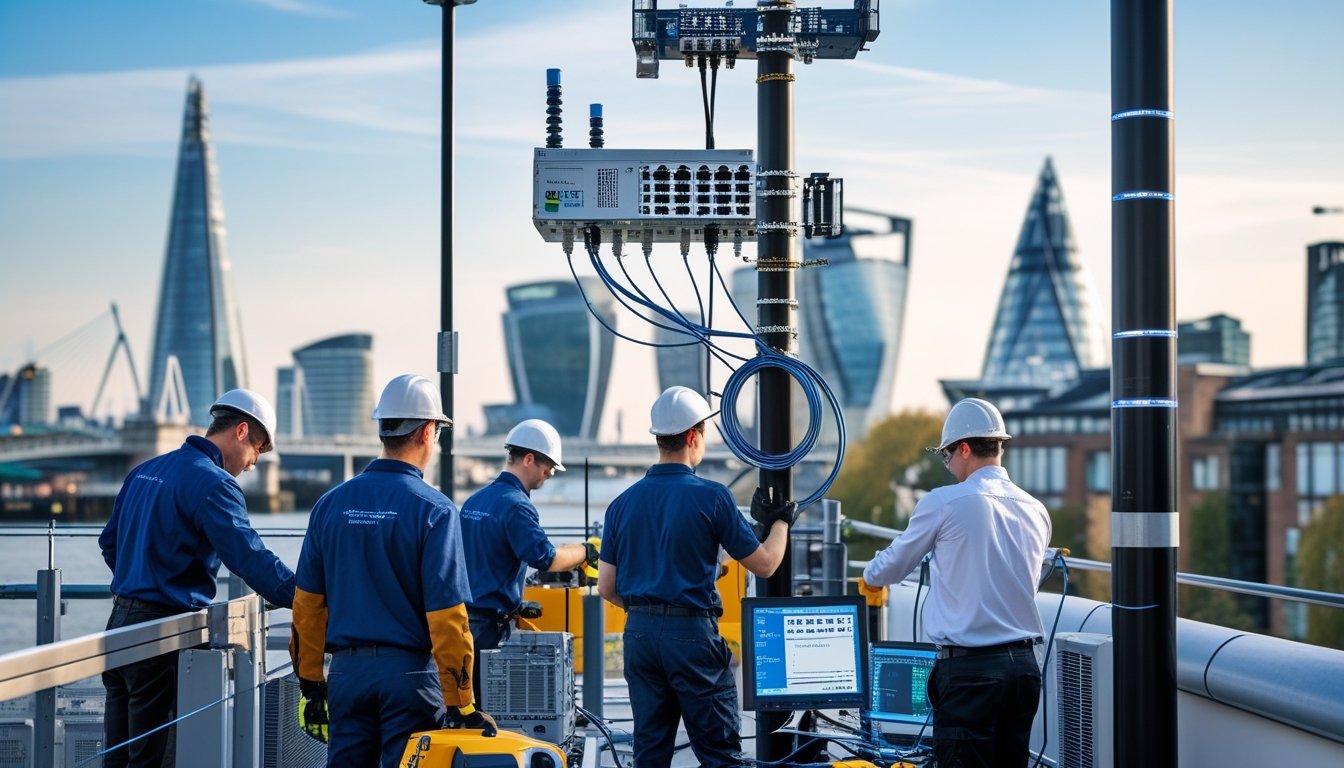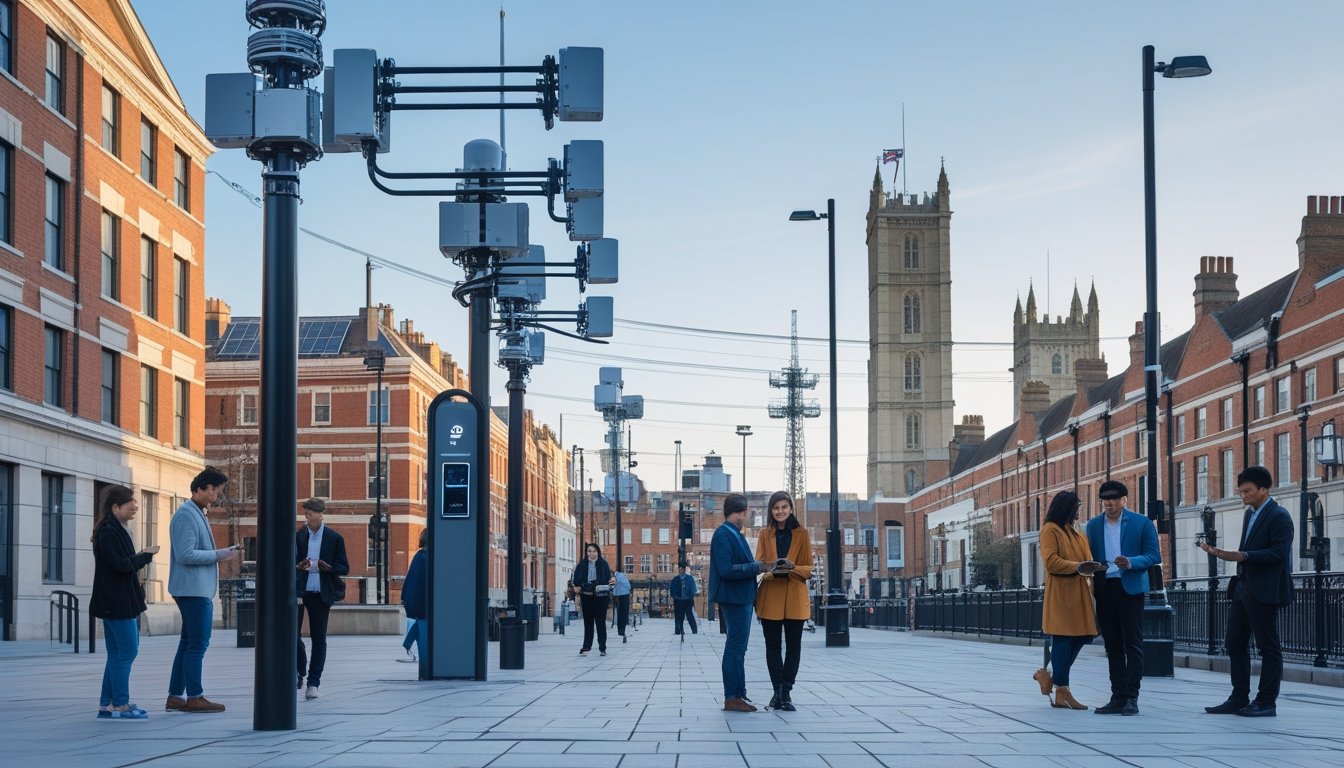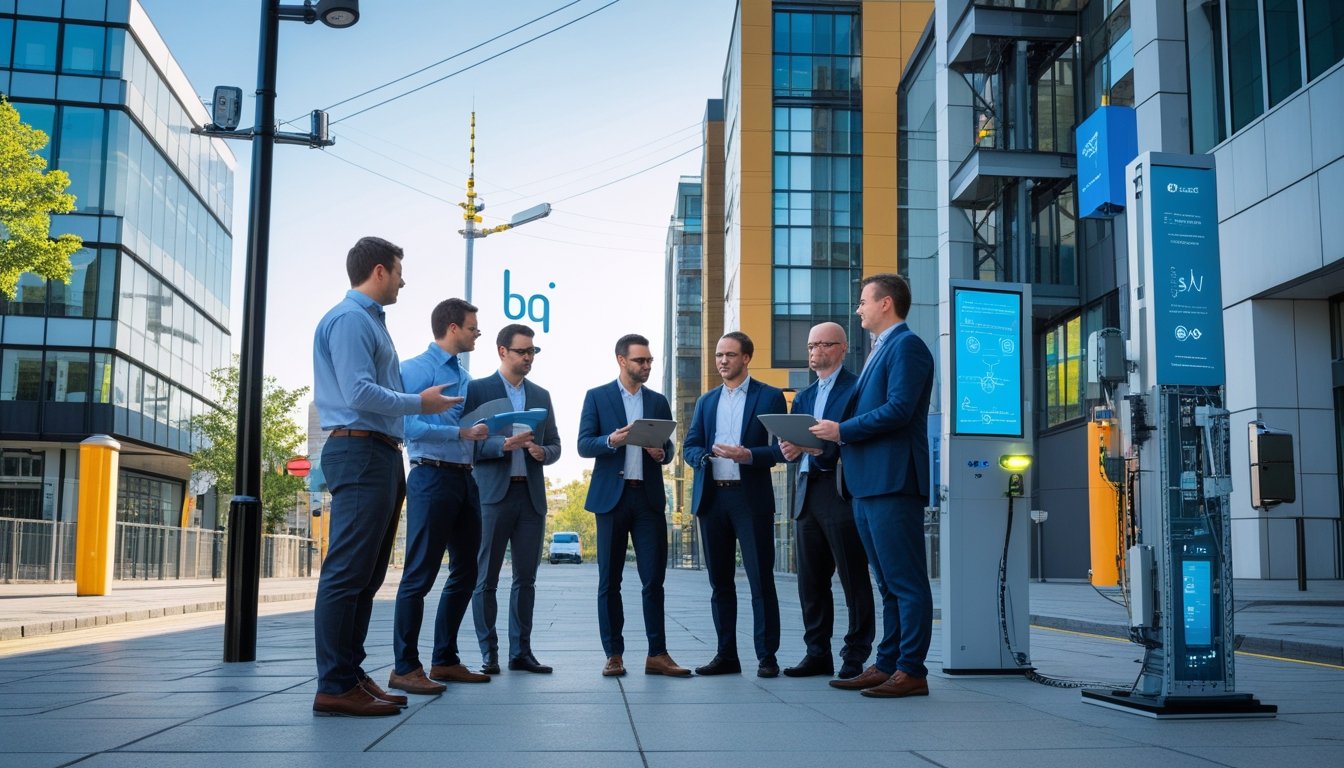Late updated: 29 Oct 2025 10:10
Written by: Oliver Bennett
Urban Internet Connectivity Solutions In The UK: Enhancing Network Access
Urban areas in the UK are witnessing a technological transformation, with significant strides being made to boost internet connectivity. Our cities are progressively enhancing their digital infrastructure, aiming to provide reliable and inclusive networks for all residents. As the demand for high-speed connections intensifies, solutions like 5G deployment and fibre optic technology have become pivotal in overcoming existing connectivity challenges.

Despite the advancements, some urban regions still face hurdles, primarily due to outdated infrastructure and dense populations. Tackling these issues calls for a multi-faceted approach, including streamlining planning processes and addressing community concerns on infrastructure developments. Partnerships between government bodies and private enterprises are key in driving these initiatives forward.
Innovations in connectivity, including utilising existing structures like street lighting for wireless networks, are proving to be effective. These efforts strive to bridge the gaps, ensuring that even areas previously overlooked receive the necessary upgrades. With these dynamic changes, urban connectivity in the UK is on the path to becoming more accessible and efficient.
Key Takeaways
- High-speed connectivity is crucial for urban UK advancements.
- Infrastructure and planning improvements address current gaps.
- Innovations and partnerships enhance digital networks efficiently.
Core Urban Internet Connectivity Solutions in the UK

In the UK, urban internet connectivity has become a central focus for enabling advanced digital infrastructure. Our examination dives into crucial components like full-fibre broadband, high-speed internet rollouts, and 5G network improvements, highlighting how these solutions are transforming the landscape of cities.
Full-Fibre Broadband Deployment in UK Cities
Full-fibre broadband is increasingly reshaping our urban connectivity. Unlike traditional copper wiring, fibre-optic cables provide a faster, more reliable connection, crucial for supporting modern digital demands. Across numerous UK cities, networks are progressively switching to full-fibre connections to meet the escalating requirements of businesses and consumers.
BT Openreach and other providers are making substantial investments in this technology. For many residents, this means access to download speeds exceeding 1 Gbps. Fibre infrastructure not only enhances user experience but also lays a vital foundation for future technological advancements. As installations progress, we witness a significant reduction in connectivity gaps in major urban centres.
Gigabit-Capable and High-Speed Broadband Rollout
The rollout of gigabit-capable broadband is well underway. This initiative aims to offer faster internet speeds to a broad audience in urban areas. Emphasising network capacity, this rollout is vital in catering to the demands of remote work and digital entertainment, which require robust bandwidth.
Such broadband options are becoming pivotal in enabling seamless high-speed internet access. Urban residents can now benefit from speeds much higher than previous averages. Our focus has included working with Internet Service Providers (ISPs) to ensure these improvements meet the increasing digital demands of the population, enhancing quality of life and business productivity.
5G Networks and Urban Digital Infrastructure
5G networks represent another leap in urban digital infrastructure. These networks significantly increase data speeds and reduce latency, essential for a smooth internet experience. Unlike previous generations, 5G can support a vast number of connected devices simultaneously, making it ideal for densely populated urban areas.
Our advancements in 5G technology not only enhance mobile internet connectivity but also offer solutions for fixed wireless access. We see urban centres leveraging this technology to boost digital infrastructure, facilitating innovations in sectors like healthcare and transportation. This capability strengthens the backbone of smart city developments, leading to more efficient and connected urban spaces.
Innovative Network Solutions: Streetlights, IoT, and Smart Cities
The integration of innovative network solutions within smart cities is gaining pace. Urban connectivity now transcends traditional methods by utilising streetlights and other public infrastructures as network hubs. By embedding connectivity technologies within these structures, we bolster network capacity and coverage.
The Internet of Things (IoT) plays a critical role, enabling devices to communicate over these new frameworks. Such connectivity solutions are part of a broader smart city vision, where efficient resource management and data analytics lead to better urban living. We are part of a transformative shift towards integrating technology seamlessly, improving city functionality through smarter and more connected infrastructures.
Addressing Urban Gaps and Emerging Connectivity Innovations

Urban internet connectivity in the UK faces distinct challenges. While we are making progress, disparities remain. Bridging these gaps involves a mix of policy measures, technology deployment, and cooperation between stakeholders.
Bridging the Digital Divide in Urban Areas
The digital divide is a pressing issue in urban regions. Despite widespread assumptions of high-speed access in cities, pockets of low connectivity still exist. Many residents and businesses suffer from internet speeds below 40Mb, significantly hindering their ability to participate fully in the digital economy.
Addressing these gaps requires targeted infrastructure investment and policy interventions. By promoting collaboration between municipal authorities and network providers, we aim to overcome hurdles in upgrading old systems. Ensuring equitable access involves not just physical infrastructure, but also affordable service plans, especially in underrepresented communities.
Role of Project Gigabit and Alternative Access Technologies
Project Gigabit is a transformative initiative in our pursuit of improved urban connectivity. With billions invested, this project aims to provide gigabit-capable connections to millions of homes and businesses across the UK. By focusing on urban upgrades, the initiative ensures that even the most densely populated areas receive the necessary upgrades.
Alternative technologies complement these efforts. Non-terrestrial networks like satellites and fixed wireless systems provide viable options where traditional expansions face challenges. Strategic partnerships are key, bringing together national bodies and local actors to develop systems that are sustainable and cost-effective. Our goal is to make these technologies more accessible and widespread.
Starlink, Satellite, and Fixed Wireless in City Environments
Starlink and similar satellite services present exciting opportunities for urban areas. Particularly in regions with difficult geography or dense population, these technologies overcome barriers associated with traditional methods. By offering high-speed connections without extensive ground infrastructure, satellites like Starlink expand possibilities for urban users.
Fixed wireless technology serves as another robust option. Suitable for buildings that impose challenges for fibre installation, these systems use radio frequencies to deliver connectivity. This ability makes them invaluable in cityscapes cluttered with physical barriers. Through these innovative methods, we are closing the urban connectivity gaps, paving the way for seamless digital interactions.
Frequently Asked Questions

In this section, we address common inquiries about urban internet connectivity solutions in the UK, exploring the technologies involved, government support, and various challenges.
What are the leading technologies in providing high-speed internet in urban areas of the UK?
The foremost technologies for delivering high-speed internet in urban areas include fibre optics, 5G networks, and Starlink services. Fibre to the Premises (FTTP) offers robust speeds, while 5G provides flexibility and rapid deployment in densely populated areas.
How does the UK government support infrastructure for internet connectivity in cities?
The UK government backs urban connectivity through initiatives like Project Gigabit, which aims to enhance broadband access in remote and rural areas. Although primarily focused on rural areas, these efforts benefit city infrastructures by ensuring comprehensive network upgrades.
What challenges do internet service providers face in expanding urban connectivity in the UK?
Internet Service Providers (ISPs) encounter hurdles such as regulatory barriers, planning permissions, and limited access to existing infrastructure. The complexity of installing new equipment, especially in densely populated or historically significant areas, often prolongs deployment times.
How do public-private partnerships impact the development of urban internet infrastructure?
Public-private partnerships play a critical role in boosting internet infrastructure by combining public support with private sector expertise. These collaborations can accelerate project timelines and leverage financial resources to address connectivity gaps efficiently.
What role do community broadband schemes play in enhancing connectivity in UK urban environments?
Community broadband schemes are important in urban settings where traditional services may be insufficient or costly. By engaging local stakeholders, these schemes can tailor solutions to the specific needs of a neighbourhood, often resulting in more targeted and effective connectivity solutions.
How has the demand for urban internet connectivity changed in the UK over the past five years?
The demand for urban internet connectivity has grown significantly, driven by the increase in remote working, online services, and digital communication needs. This surge is spurring rapid advancements in technological deployment and infrastructure investment to keep pace with user expectations.
